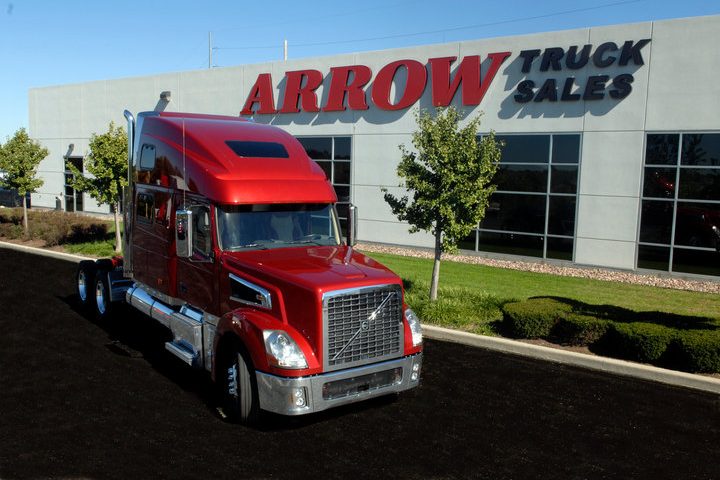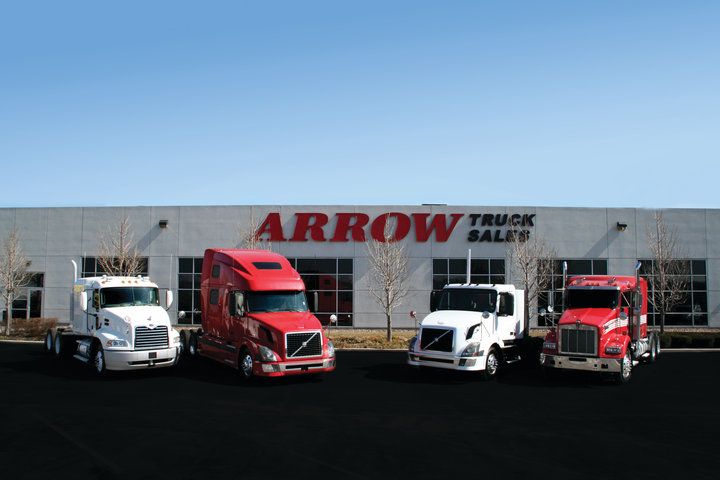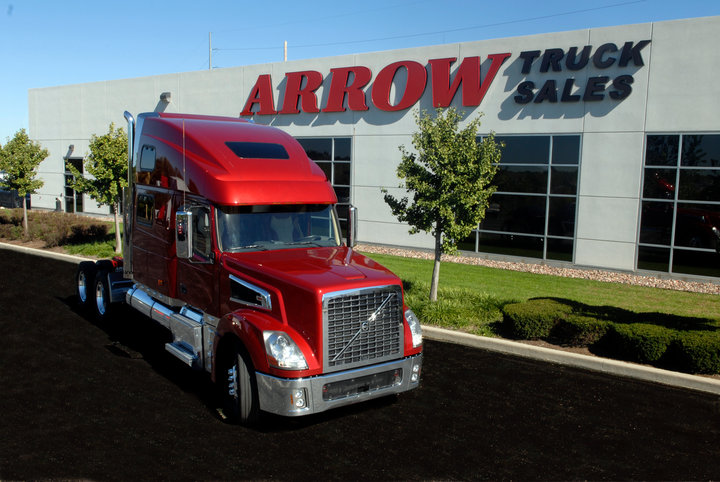
Plan Your 34-Hour Resets Over The Weekend
February 23, 2017
Common owner operator truck driver mistakes when buying commercial trucking insurance
May 16, 2017If you are thinking about investing in a pre-owned rig or maybe looking into upgrading an existing equipment and don’t know where to start? Arrow Truck Sales has put together this useful truck buying guide to help you select the best rig for your owner operator business.
Inspecting a Used Truck
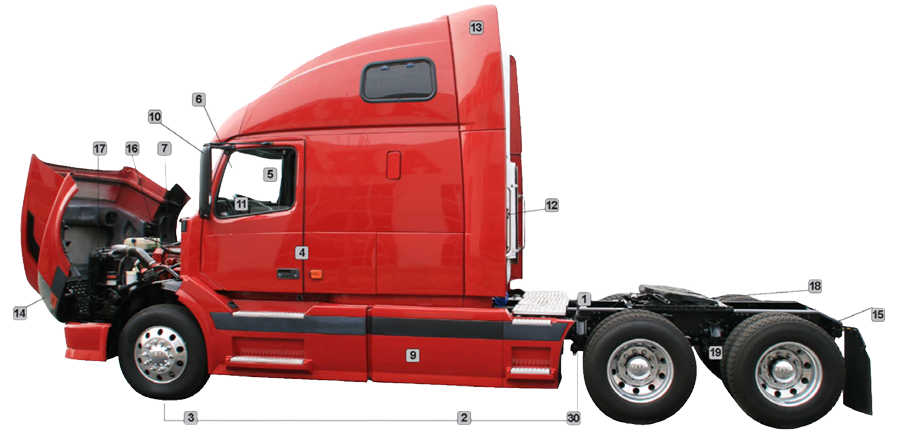
Truck
1. EXAMINE FRAME AND MEMBERS FOR CRACKS, welds or bends. Rust bleeding from bolt holes indicate loose bolts.
2. DRAIN AIR TANKS AND LOOK FOR OIL, which is an indication that the compressor should be replaced.
3. CHECK FOR LEAKS in the fuel lines and fittings between the pump and injectors.
4. OPEN AND CLOSE DOORS to make sure they seat, latch and lock properly. Check condition of baskets.
5. ROLL WINDOWS UP AND DOWN and check for smooth operation. Inspect the track felt.
6. LOOK FOR CRACKS, chips and pitting on the windshield.
7. CHECK WIRING AND HOSES for cracks, loose connections, and signs of corrosion. Firewall insulation should be intact and secure.
8. CHECK THE EXHAUST SYSTEM for cracks and corrosion. Mounts should be secure. Fittings should be tight and well sealed. Exhaust streaks around fittings indicate leaks.
9. EXAMINE FUEL TANK TRAPS and gaskets for wear and slippage. Check the tank itself for wear and leaks. Crossover line, if installed, should be free of fraying and cuts. Its shutoff valves should operate smoothly.
10. CHECK STABILITY OF MIRRORS, whether standard or power operated.
11. INSIDE THE CAB, listen for leaks in brake valves. Check seat operation. Make sure drawers, doors, and appliances work well.
12. CHECK TRAILER SERVICE LINES and glad-hand connectors for damage and leaks.
13. PAY ATTENTION TO SLEEPER AND CAB EXTERIOR, especially wear in rivet areas and mounting brackets.
14. EXAMINE HEADLIGHT HOUSINGS for rust and general condition.
15. CHECK TIRES FOR SCUFFING AND UNEVEN WEAR, signs of misaligned axles and/or incorrect tire pressure. Ideally, all drive tires are identical; they should at least be the same size. Check the inner and outer sidewalls for cuts and other damage. Look for multiple branding marks on sidewalls, which indicate recapping.
16. LOOK INSIDE THE OIL TUBE for a milky substance, which indicates condensed water vapor.
17. CHECK THE RADIATOR for vent, missing or plugged cooling gins. Remove cap and look for signs of oil or fuel in water, which could signify leaking injector sleeves.
18. CHECK THE FIFTH WHEEL LOCK by stretching truck and trailer.
Brakes and Suspension
19. CHECK TORQUE ARM bushings for wear.
20. CHECK LEAF SPRINGS for cracks and wear. Watch the suspension operate as the truck is being driven slowly across an uneven surface. The mechanism should move smoothly and respond quickly. Air springs should have no cuts, gouges, or audible leaks.
21. CHECK CONDITION OF BRAKE LINING. Lining must be no thinner than ¼ inch. Oily stains on the shoes indicate a previously failed wheel seal and potentially oil-soaked linings.
22. FEEL INSIDE THE BRAKE DRUM to determine actual wear. With the brakes released, tap each drum with a piece of metal to determine if it’s cracked.
23. WHILE SOMEONE APPLIES THE BRAKES, listen for leaks in the air lines and brake canisters. Watch the amount of pushrod travel to determine if the automatic slack adjuster is working. Make sure all linkage hardware is present.
24. WITH THE BRAKES RELEASED AND WHEELS CHOCKED, firmly shake the S-camshaft to determine bearing wear.
25. CHECK CONDITION OF AIR LINES TO BRAKES.
26. LOOK FOR HUB LUBE on the inside of wheels, which indicates a failed wheel seal.
Steering
27. MAKE SURE THE STEERING LINKAGE is tight.
28. WATCH FOR UNEVEN STEERING TIRE WEAR which can signify alignment or front-end problems.
29. LOOK FOR CRACKS and sign of deformity of attempted repairs. Rust around lug nuts is an indicator of slippage.
30. LOOK FOR LEAKY SHOCKS, missing or smashed grease fittings and a crooked front axle.
31. JACK UP THE FRONT AXLE and shake the tops of tires sideways to check for kingpin and wheel bearing play.
“Not all numbers are diagramed”
